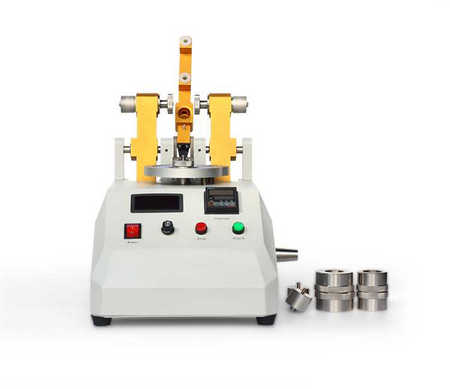- Qinsun Instruments Co., Ltd.
- Tell:+86-21-6780 0179
- Phone:+86-17740808215
- Address:No. 2578 Minhang District Gu Dai Road, Shanghai
- Contact:Mr. Li
- QQ:846490659
Is scratch resistance the same as abrasion resistance?

Scratch resistance and abrasion resistance are related concepts, but they are not entirely the same. While both terms refer to the ability of a material to resist surface damage, they have different underlying mechanisms and testing methods. In this response, I will explain the differences between scratch resistance and abrasion resistance, providing an overview of their definitions, testing methods, and factors that influence them.
1. Definition of Scratch Resistance:
Scratch resistance refers to a material's ability to resist the formation of visible scratches or marks on its surface when subjected to a specific force or contact with a harder object. It is primarily concerned with the material's response to localized, single-point contact. Scratch resistance is particularly important for materials that are prone to surface scratching in everyday use, such as display screens, touch panels, or automotive finishes.
2. Definition of Abrasion Resistance:
Abrasion resistance, on the other hand, assesses a material's ability to resist wear and damage caused by mechanical rubbing, friction, or repeated contact with abrasive substances. It focuses on the material's performance over a broader contact area and involves a combination of localized scratching, surface deformation, and material removal. Examples of abrasion include the wearing of shoe soles, the degradation of pavement surfaces, or the erosion of industrial machinery parts.
3. Testing Methods for Scratch Resistance:
Multiple methods exist to evaluate scratch resistance, depending on the material and application. Common tests include:
a. Rockwell or Vickers Hardness Test: These tests determine the material's resistance to indentation by measuring the depth or size of an indenter impression. Although not exclusively focused on surface scratching, hardness values can provide an indication of scratch resistance.
b. Nanoscratch Test: A nanoscratch test involves systematically applying a controlled load or force to a small area using a sharp, diamond-tipped stylus. Measurements of the resulting scratch width or depth provide insights into a material's scratch resistance.
c. Tape Test: A tape test involves applying adhesive tape (such as duct tape or scotch tape) to the surface of the material and then removing it quickly. The presence or absence of visible scratches or tape residue indicates the material's resistance to surface damage.
d. Cylindrical or Conical Stylus Test: In this test, a stylus with a specific shape (usually cylindrical or conical) is dragged across the surface of the material under a controlled load. The resulting scratches are measured and evaluated.
4. Testing Methods for Abrasion Resistance:
Abrasion resistance testing involves subjecting the material to repeated mechanical contact, often using specific instruments. Some commonly used tests include:
a. Taber Abrasion Test: The Taber Abrasion Test is widely used to evaluate a material's resistance to abrasive wear. It involves rotating abrasive wheels or disks that exert a controlled force on the material's surface, simulating the abrasive action experienced in real-world applications.

b. Falling Sand Abrasion Test: This test utilizes a stream of sand or other abrasive particles that are directed onto the material's surface, simulating the effects of erosion or wear caused by airborne particles or harsh environments.
c. Dry/Wet Rubbing Test: This test evaluates the material's resistance to abrasion when rubbed against other surfaces under dry or wet conditions. It can assess the durability and colorfastness of materials, such as textiles or coatings.
d. Grit Feeder Test: The grit feeder test involves continuously feeding a specific type and size of abrasive grit onto the material's surface while applying a controlled force. This test simulates the abrasive wear encountered in applications with particulate matter or debris.
5. Factors Affecting Scratch and Abrasion Resistance:
Several factors influence the scratch resistance and abrasion resistance of a material:
a. Hardness: Materials with higher hardness values tend to exhibit better scratch resistance. Hardness is a measure of a material's resistance to indentation or deformation and can indicate how well it can resist surface scratching.
b. Surface Coatings: Applying protective coatings, such as varnishes, films, or surface treatments, can improve a material's scratch and abrasion resistance. These coatings act as sacrificial layers that absorb the damage instead of the underlying material.
c. Material Composition: The chemical composition of a material can significantly impact its scratch and abrasion resistance. Materials with stronger intermolecular forces or higher molecular density tend to exhibit better resistance to scratching and wear.
d. Surface Finish: The texture and finish of a material's surface can influence its scratch and abrasion resistance. Smoother surfaces often exhibit better resistance due to reduced friction and decreased potential for snagging or catching on rough surfaces.
e. Applied Force or Load: The magnitude and application of force or load, as well as the contact area and duration, play a role in both scratch and abrasion resistance. Higher loads, repeated contact, or aggressive forces can exacerbate surface damage and material wear.
It is important to note that scratch resistance and abrasion resistance are complex phenomena influenced by various factors. As such, multiple testing methods and standards are available to assess these material properties. Additionally, different industries or applications may have specific requirements or preferred testing protocols.
While this response provides an overview of scratch and abrasion resistance, it is not an exhaustive examination of the topic. Detailed information on specific testing techniques, equipment, or material performance standards may require further research or consultation of specialized literature and references.





